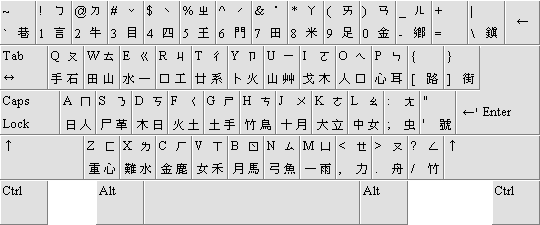
From the always interesting Tyler Cowen:
Chinese “input” uses the QWERTY keyboard in an entirely different manner. In China, the QWERTY keyboard is “smart,” in the sense that it makes full use of modern-day computer power to augment and accelerate the input process. First of all, the letters of the Latin alphabet are not used in the same limited way that we use them in the alphabetic world. In China, “Q” (the button) doesn’t necessarily equal “Q” (the letter). Instead, to press the buttons marked Q, W, E, R, T, Y (or otherwise) is, strictly speaking, a way to give instructions to a piece of software known as an “Input Method Editor” (IME), which runs quietly in the background on your computer, intercepts all your keystrokes, and uses them as guidelines to try and figure out which Chinese characters the user wants. Using the most popular IME around today — Sougou Pinyin — the moment I strike the letter Q, the system is off and running, trying to figure out what I want. With the first clue, the IME immediately starts showing me options or “candidates” in a pop-up menu that follows me along on screen — in this case, Chinese characters, names, or phrases whose phonetic value begins with Q, such as Qingdao or Qigong.
The moment I hit the second button — let’s say U — the IME immediately changes up its recommendations, now giving me only characters that have pronunciations starting with “Qu.” There is no set, standard way to manage this process, moreover. There are many IMEs on the market, and each IME has many customizable settings. Some IMEs don’t use phonetics at all, in fact, but instead use Latin letters to indicate certain shapes or structural properties of the Chinese characters you want. And on top of all of this, there are countless abbreviations and shortcuts you can use to speed up the process (e.g., typing “Beijing” will get you the capital of China, but so will “bjing,” “beij,” or simply “bj”). And then, of course, there is “predictive text,” which as I have shown elsewhere, was developed and popularized in China decades before it was in the West.
In other words, for the computer age the Chinese system of characters has worked out quite well, and in some ways may be superior to the Roman alphabet. The piece is Jeffrey Wasserstrom interviewing Tom Mullaney, and is of interest more generally.
- See more at: http://marginalrevolution.com/marginalrevolution/2016/05/how-does-china-use-the-qwerty-keyboard.html#sthash.2Gii4pa4.dpuf
No comments:
Post a Comment